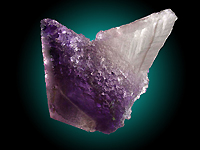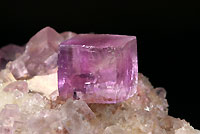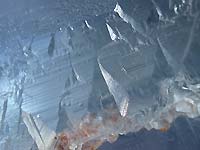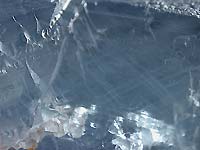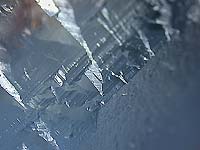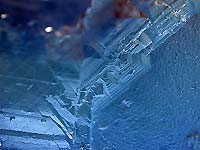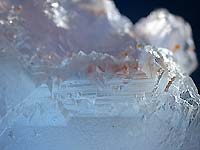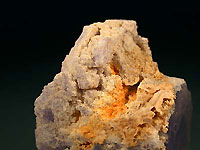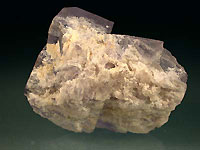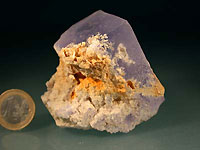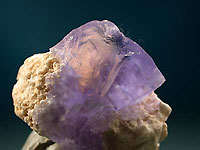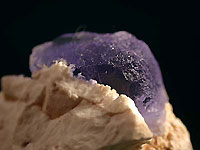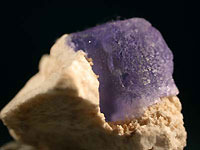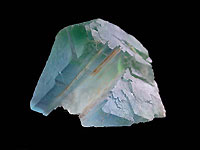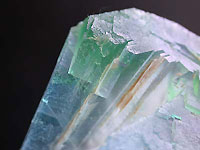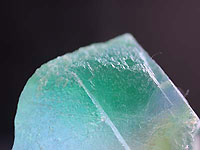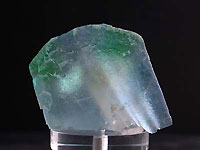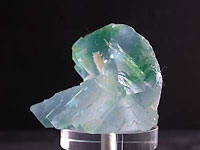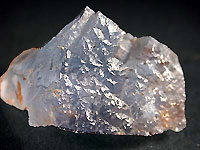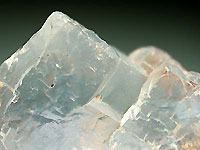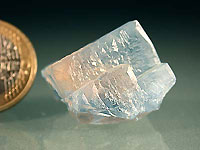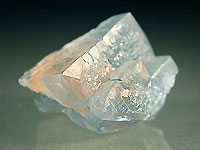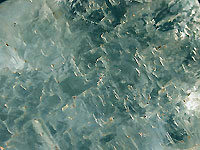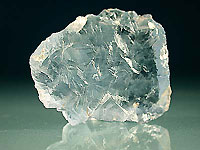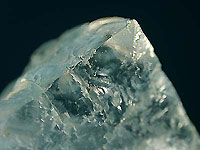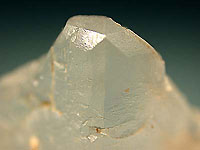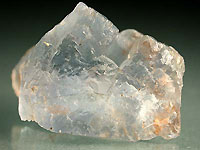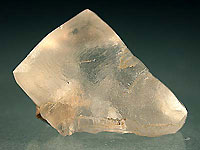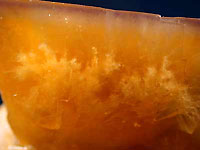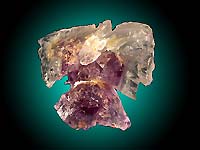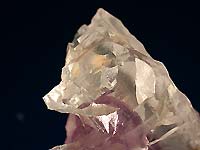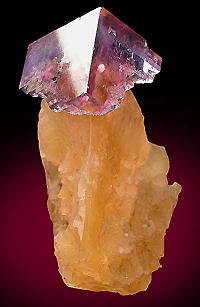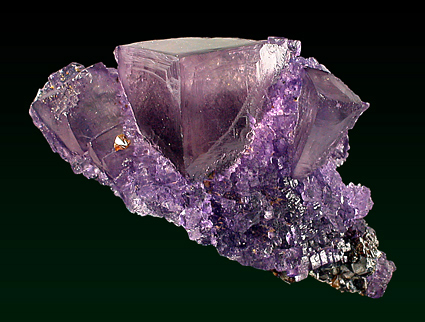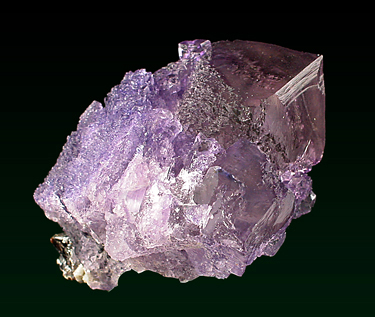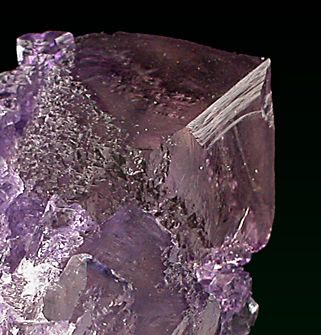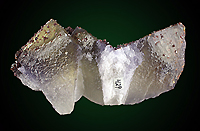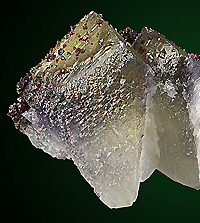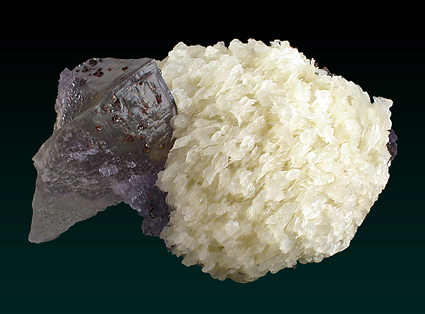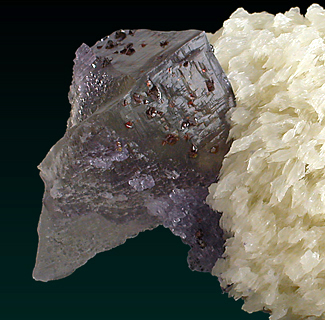Dissolution et figures de corosion des cristaux de fluorite Texte issu d'une traduction partielle de l'article de Paul Rustemeyer - Lapis 11 - Décembre 2000 Résumé: Dans de nombreux endroits de la croute terrestre, croissent des cristaux de fluorite, à partir d'une solution mère. Des cristaux parfaits à surfaces brillantes et lumineuses sont ainsi créés. Il n'est pas rare qu'à cette phase de croissance, suive une phase au cours de laquelle les cristaux sont attaqués par un liquide agressif et corrosif. Pendant cette phase, la solution corrosive attaque souvent le cristal par l'intérieur, et par les arêtes lorsque celles-ci ont leur structure atomique qui présente un certain désordre. Lors de la cristallogénèse, il y a des étapes qui ne donnent pas des surfaces cristallines lumineuses, mais qui donnent des des noyaux bizarement formés : emoussés, corrodés, mat ternis. Ainsi, ils peuvent apporter aux collectionneurs beaucoup d'informations sur le genèse puis leur destruction.
Introduction: La fluorite, dans l'étude des processus de dissolution et de corrosion, est pour plusieurs raison, un minéral approprié: * Avec 19 mg/L, la fluorite à une bonne solubilité dans l'eau. C'est pour cette raison que les figures de dissolution sont courants et rapides; *Les cristaux de fluorite ont souvent des défaut de structure, et ceux-ci se developpent en des figures interessantes pendant la corrosion; *Grâce à ses différentes structures, la fluorite montre des figures de dissolution sur plusieurs couches et niveaux; *La fluorite est abondante dans la nature, et est également proposée aux collectionneurs, lors de boureses minéralogiques, sous des variétés incroyables, et provenant des sites du monde entier. Malheureusement, beaucoup de spécimens qui étaient interessants à cause de leurs figures de dissolution, ne sont jamais arrivés sur le marché, car jugée pas assez belle par le vendeur. Dans cet article, l'objectif est de présenter le monde fascinant des phénomènes de dissolution et de corrosion naturels des cristaux de fluorite. Certaines observations resteront dans le domaine de la spéculation car la genèse de la dissolution sont impossible à observer et à suivre dans des conditions clairement définies (comme celles d'un laboratoire). (Comparer les deux articles et les différentes espérimentations de Robert B....)
|
|||||||||||||||||||||||
|
|
|||||||||||||||||||||||
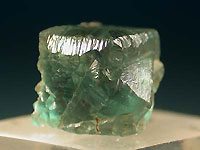 |
Figure
de dissolution ou de croissance? Collection Sutcliffe. |
||||||||||||||||||||||
|
|
|||||||||||||||||||||||
|
|
|||||||||||||||||||||||
|
|
|||||||||||||||||||||||
|
|
|||||||||||||||||||||||
|
|
|||||||||||||||||||||||
|
Dan Weinrich collection. |
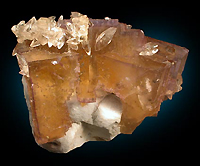 |
||||||||||||||||||||||
|
Fluorite - Elmwood Mine, Carthage, Central Tennessee Ba-F-Pb-Zn District, Smith Co., Tennessee, USA
|
This is a highly choice etched fluorite crystal set on a matrix of other etched purple fluorites, this with minor black crystallized sphalerite. The main etched crystal comes out of the mass of crystallized fluorite somewhat, terminating in a glassy three sided cubic crystal. This is like a window that looks into the fluorite showing great transparency. Neat and pretty; I cannot find any damage. Size: 8.6 x 4.6 x 6.3 cm.
|
||||||||||||||||||||||
|
Fluorite with Sphalerite - Stonewall, Central Tennessee Ba-F-Pb-Zn District, Smith Co., Tennessee, USA
|
This is a somewhat unusual and neat specimen consisting of several inter-grown etched fluorite crystals forming a cluster measuring 12 x 6 x 6.3 cm in size overall. The base of the specimen shows the etched "snow cones" of fluorite as seen in the photo at lower left; the top of the specimen consists of glassy three sided cubic crystals "topping off" the "snow cone" etched bases. The crystals from the top are very glassy and show great transparency, with the interior of the fluorite a dull yellow to purple in color. The quality of the fluorite on the interior is very high and would most likely cut one or more excellent faceted gemstones. To top off the specimen, the cubic faces are partly to wholly coated by micro gemmy reddish-black sphalerite crystals. These in turn are partly coated by tiny colorless sparkling calcite crystals. The crystal at the far left in the photo at upper right has a chip in the back corner of the crystal; otherwise the specimen on top is perfect. The base of the specimen, showing the etching, is undamaged except for the point of the etched crystal in the close up photo at lower left.
|
||||||||||||||||||||||
|
Fluorite with Barite & Sphalerite - Elmwood Mine, Carthage, Central Tennessee Ba-F-Pb-Zn District, Smith Co., Tennessee, USA
|
|
||||||||||||||||||||||
|
Special thanks to Dan Weinrich for theses photos and texts. The specimens all come from Dr. Steve Neely collection and were published in the Mineralogical Record magazine. |
|||||||||||||||||||||||
![]()
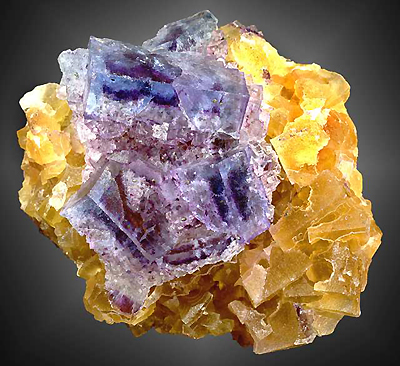
Fluorite - Minerva Mine USA
Photo Suart Wilensky
![]()
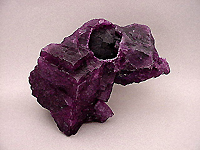 |
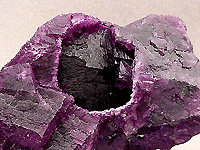 |
||
|
ROSICLARE/SUB-ROSICLARE
LEVELS, HILL-LEDFORD MINE, OZARK-MAHONING COMPANY, CAVE-IN-ROCK
DISTRICT, SOUTHERN ILLINOIS A large group of grapey-purple cubic fluorite crystals (to 6 cm) with no apparent point of attachment (a floater). Near the center of one area is a classic 'Bird's Nest' (5x7 cm) that is either formed by preferential dissolution of a barite nodule/ball, or, by an overgrowth on a hydrocarbon inclusion. Judging from the texture of the fluorite surface I favor the former hypothesis as the surface is scored and striated suggesting a barite ball. These barites, prior to dissolution, would resemble those from the Elmwood orebodies. The process of barite removal is most prevalent at the nearby Minerva orebody but these distinctive 'Bird's nests' are definitely the best from the Hill-Ledford. It is very unsual to find such a displayable example aesthetically formed on a fluorite group. From mining ca. late 1960s. An excellent, large cabinet specimen from southern Illinois. 12x16x25 cm.
ROSICLARE/SUB-ROSICLARE
LEVEL, HILL-LEDFORD MINE, OZARK-MAHONING COMPANY, CAVE-IN-ROCK DISTRICT,
SOUTHERN ILLINOIS
Thanks to Ross Lillie http://www.northstarminerals.com |
|||
![]()
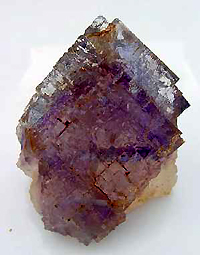 |
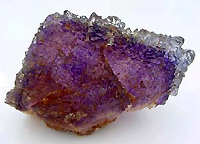 |
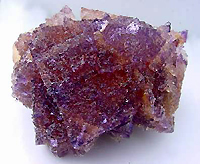 |
|
Fluorite
- Deardorff Lead, Illinois.2 1/4" x 3".
Blue with purple phantom |
Fluorite
- Deardorff Lead, Illinois.
3 1/2" x 2 1/4". Blue with purple phantom |
|
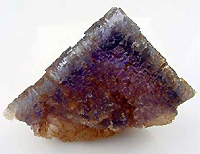 |
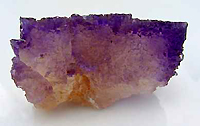 |
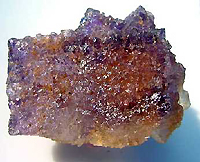 |
|
Fluorite
- Deardorff Lead, Illinois. 3 1/4" x 2 1/2". Blue with
purple phantom
with yellow/red. |
Fluorite - Deardorff Lead, Illinois. 2 3/8" x 1 3/4"
|
Fluorite
- Deardorff Lead, Illinois. 2 1/2" x 2".
Blue with purple phantom. With yellow/red. |
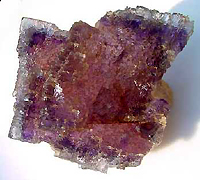 |
 |
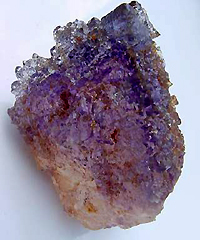 |
|
Fluorite
- Deardorff Lead, Illinois. 6" x 4 3/4". In sunlight.
Blue with purple phantom. With yellow/red. |
Fluorite
- Deardorff Lead, Illinois. 4" x 3 1/2". Good light blue
secondary growth.
|
|
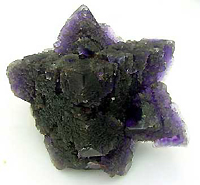 |
Thanks to Chris Wright |
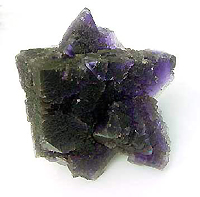 |
|
Fluorite
- Deardorff Lead, Illinois. 4 1/2" x 4".
|
||
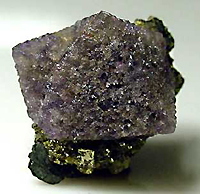 |
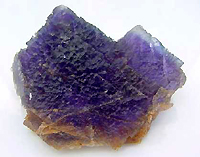 |
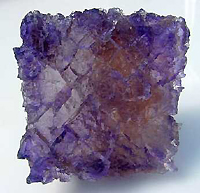 |
|
Fluorite
with Ferberite - Kara Oba, Kazakhstan. 1 1/2" x 1 1/4".
Good older
piece. From the Gilbert Collection. |
Fluorite
- Deardorff Lead, Illinois. 3 1/2" x 3".
Blue with purple phantom |
Fluorite
- Deardorff Lead, Illinois.3 1/4" x 2 1/2".
|
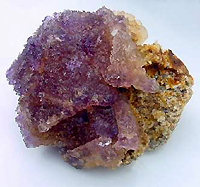 |
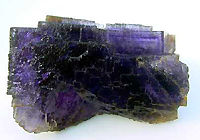 |
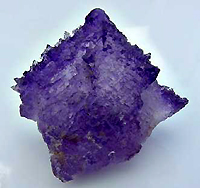 |
|
Fluorite - Deardorff Lead, Illinois. 6 1/2" x 6". Very
attractive on matrix. Good color change.
|
Fluorite
- Deardorff Lead, Illinois. 3 3/8" x 3"
|
Fluorite
- Deardorff Lead, Illinois. 2" x 2".
|
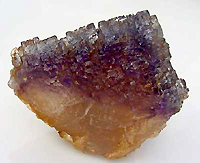 |
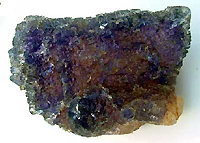 |
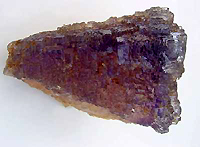 |
|
Fluorite
- Deardorff Lead, Illinois. 4" x 3 1/2".
Good light blue secondary growth. |
Fluorite
- Deardorff Lead, Illinois. 5 3/4" x 4 1/2".
Blue with purple phantom. With yellow/red. |
Fluorite
- Deardorff Lead, Illinois. 3 1/4" x 2 1/2".
Blue with purple phantom. |
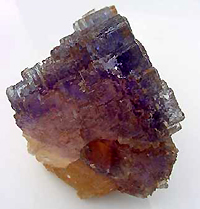 |
Merci à Chris Wright. |
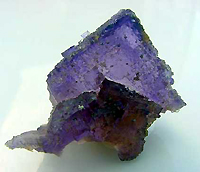 |
|
Fluorite
- Deardorff Lead, Illinois. 3 3/8" x 2 1/2". |
Fluorite - Deardorff Lead, Illinois. 2" x 1 3/4".
|
|
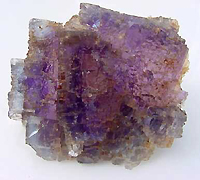 |
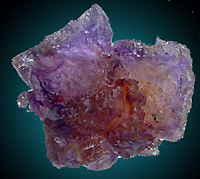 |
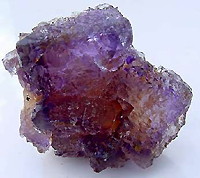 |
|
Fluorite
- Deardorff Lead, Illinois. 3 1/2" x 3".
|
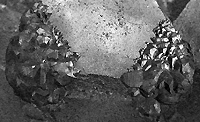 |
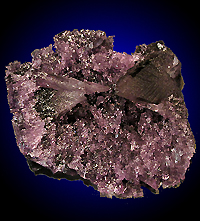 |
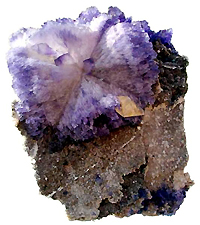 Elmwood mine - Coll J. Evlard. |
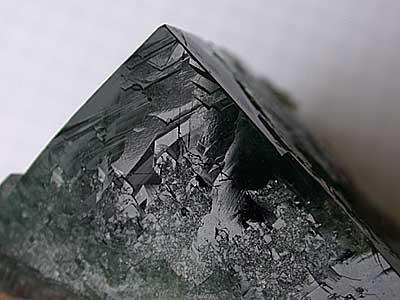 |
||
